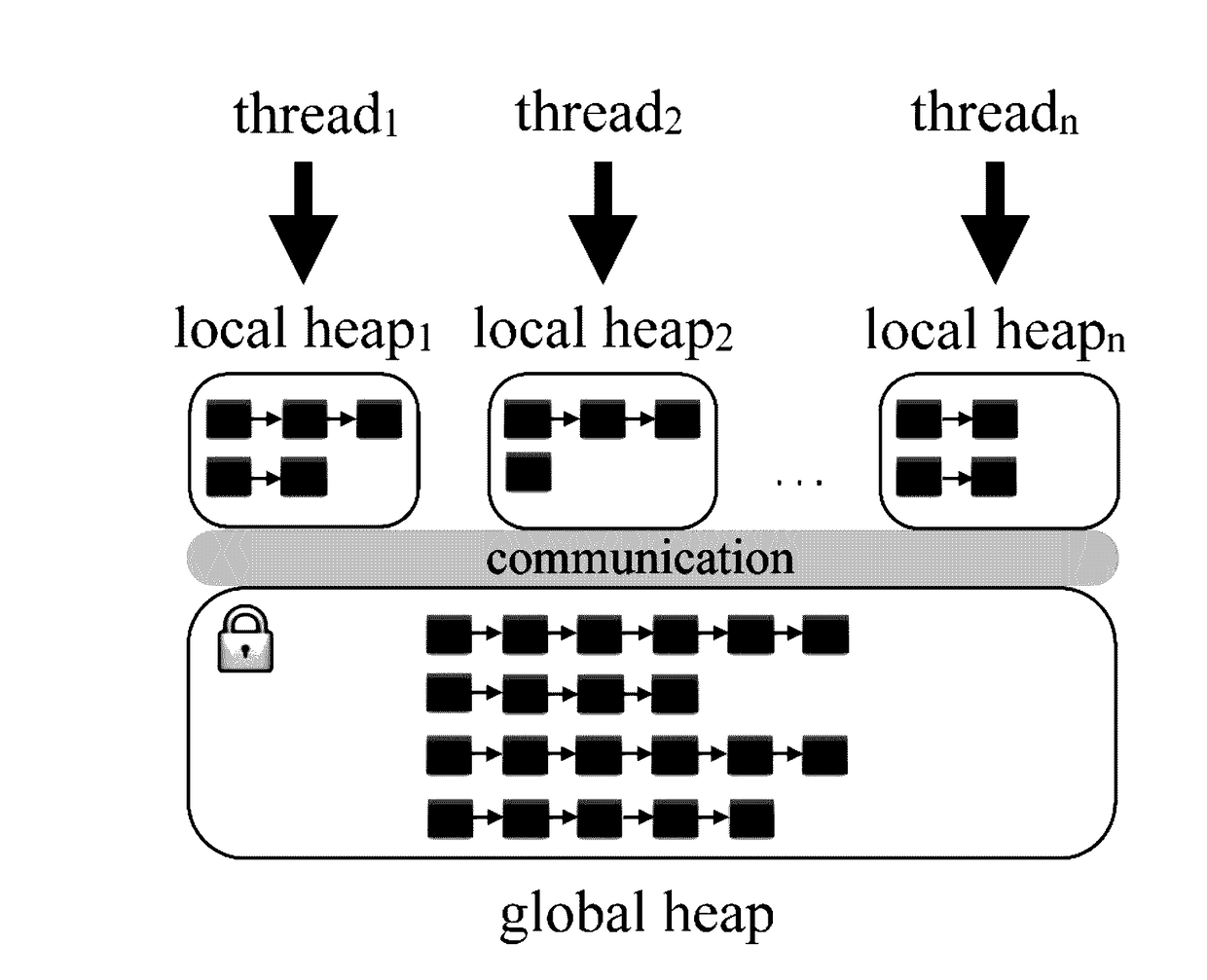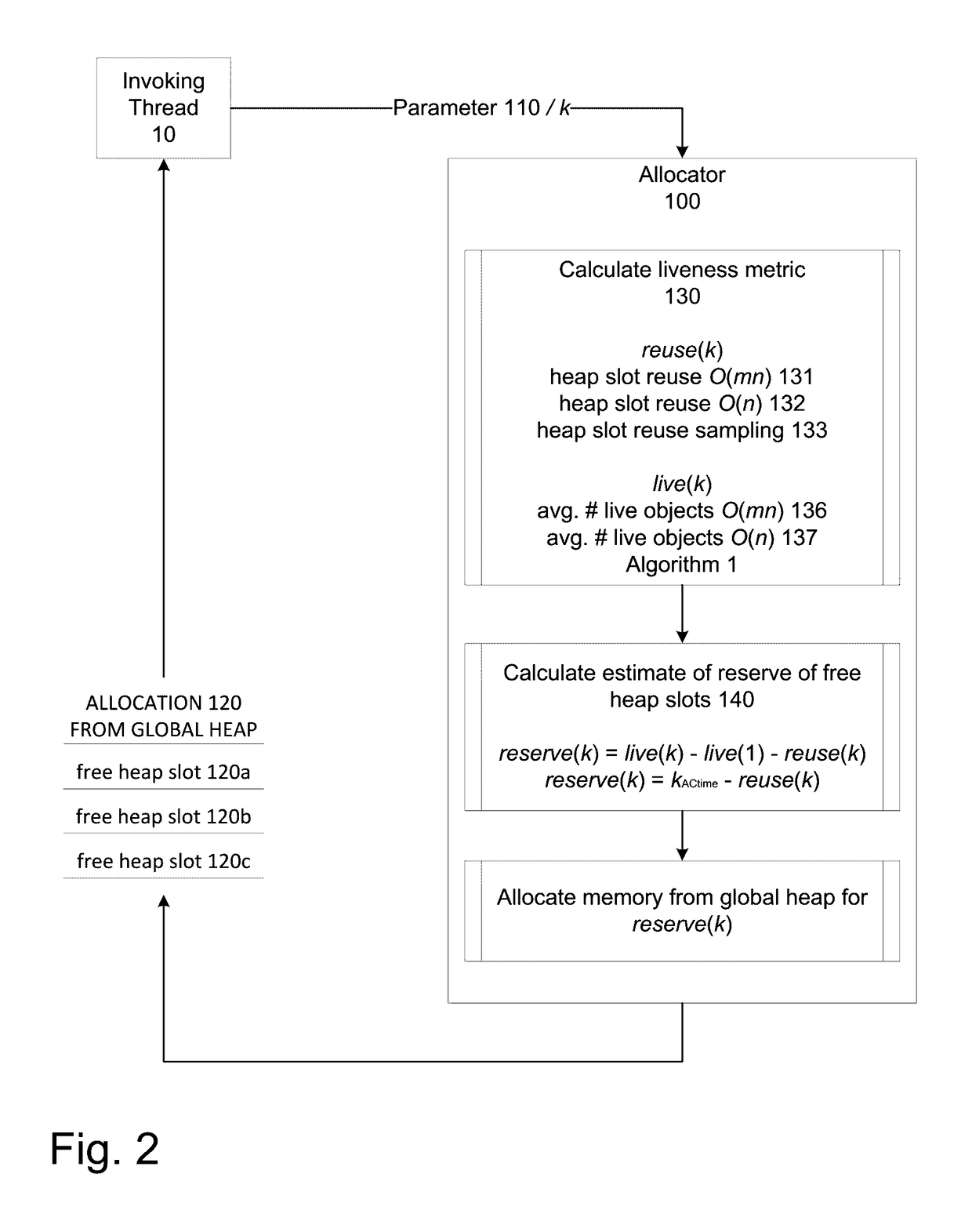Parallel memory allocator employing liveness metrics
a parallel memory and liveness technology, applied in the field of computer systems, can solve the problems of reducing the cost of heap operations as effectively, consuming over 30% of the total time spent in the allocator, and increasing the likelihood and potential severity of inter-thread contention
- Summary
- Abstract
- Description
- Claims
- Application Information
AI Technical Summary
Benefits of technology
Problems solved by technology
Method used
Image
Examples
Embodiment Construction
[0022]Table 1 shows the performance of two benchmark programs, generating from 1 to 256 threads for concurrent execution, run on two different types of computer systems. The first is an Intel “Haswell”-based dual processor system capable of executing 72 simultaneous hardware threads. The second is an IBM Power8-based dual processor system capable of executing 160 simultaneous hardware threads. The benchmark programs apply Wolfram Gloger's multiple-threaded allocator performance tests to the TCMalloc allocator. [4] As more threads are used, program running time is initially reduced but eventually increases by up to two orders of magnitude. As discussed in greater detail below, despite the use of global and local heaps, a default-configured or singly-configured memory allocation module may exhibit pathologically bad performance in high concurrency workloads due to the computational cost of operations affecting the global heap. The global heap can be costly to access due to poor per-co...
PUM
 Login to View More
Login to View More Abstract
Description
Claims
Application Information
 Login to View More
Login to View More - R&D
- Intellectual Property
- Life Sciences
- Materials
- Tech Scout
- Unparalleled Data Quality
- Higher Quality Content
- 60% Fewer Hallucinations
Browse by: Latest US Patents, China's latest patents, Technical Efficacy Thesaurus, Application Domain, Technology Topic, Popular Technical Reports.
© 2025 PatSnap. All rights reserved.Legal|Privacy policy|Modern Slavery Act Transparency Statement|Sitemap|About US| Contact US: help@patsnap.com



